Is the antenna on your pictures the same as the Sunhans?
Yours looks different.
there’s no sticker ‘sunhans’ on it… but its definitely from the same factory (look at the blue alu mounting )
anyway… mine is completely useless @ 868 mhz. I’m thinking of mounting a 3 dbi rubber duck inside the enclosure (with a node)
- @Epyon then its not the same and I have a cloon here (was about 10 E last year)
The alu mounting bracket is actually very different. The type and position of holes, the dimensions, the mounting of the antenna, …
My Sunhans works pretty much the same as the GPA.
The sleeve balun also known as bazooka has more than one function:
Its function is that of radiator and also impedance matching, it prevents currents flowing from the feedpoint of the antenna back over the outside of the feeding cable. That would cause bad VSWR and distortion of the radiation pattern. Theoretically the length of the sleeve should be an electrical 1/4 λ. Because of its thickness the physical length will be less than 1/4 λ That has nothing to do with the velocity factor of the cable that is inside the tube but it is called the shortening factor. Only infinite thin wires will resonate at its theoretical frequency, real wires or tubes will have a lower resonance frequency and therefore needs to be shorter. This is why it is called “shortening factor”.
On https://en.wikipedia.org/wiki/Dipole_antenna is a more complete explanation about dipoles.
The coil/inductor in the radiating part of this antenna is more complicated. A coil where the wire is longer than 1/4 λ does no longer behave inductive but behaves capacitive. Coils (shorter than 1/4λ) can be used for shortening the antenna but also as a phasing element in a collineair antenna.
I believe the coil in this antenna is experimentally defined and adjusted for best vswr. Very likely the gain of this antenna will be a less than the gain of a real dipole, because a coil is less efficient in radiating its energy into space.
A antenna like this model: 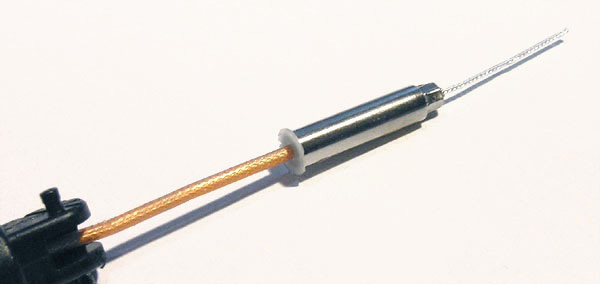 (this is for 2.4GHz WiFi) will most likely be more efficient.
(this is for 2.4GHz WiFi) will most likely be more efficient.
Great correction, clarification and tutorial - thanks.
This depth of complexity around antennae that work really well is exactly why I personally stick to buying antennae from good suppliers!
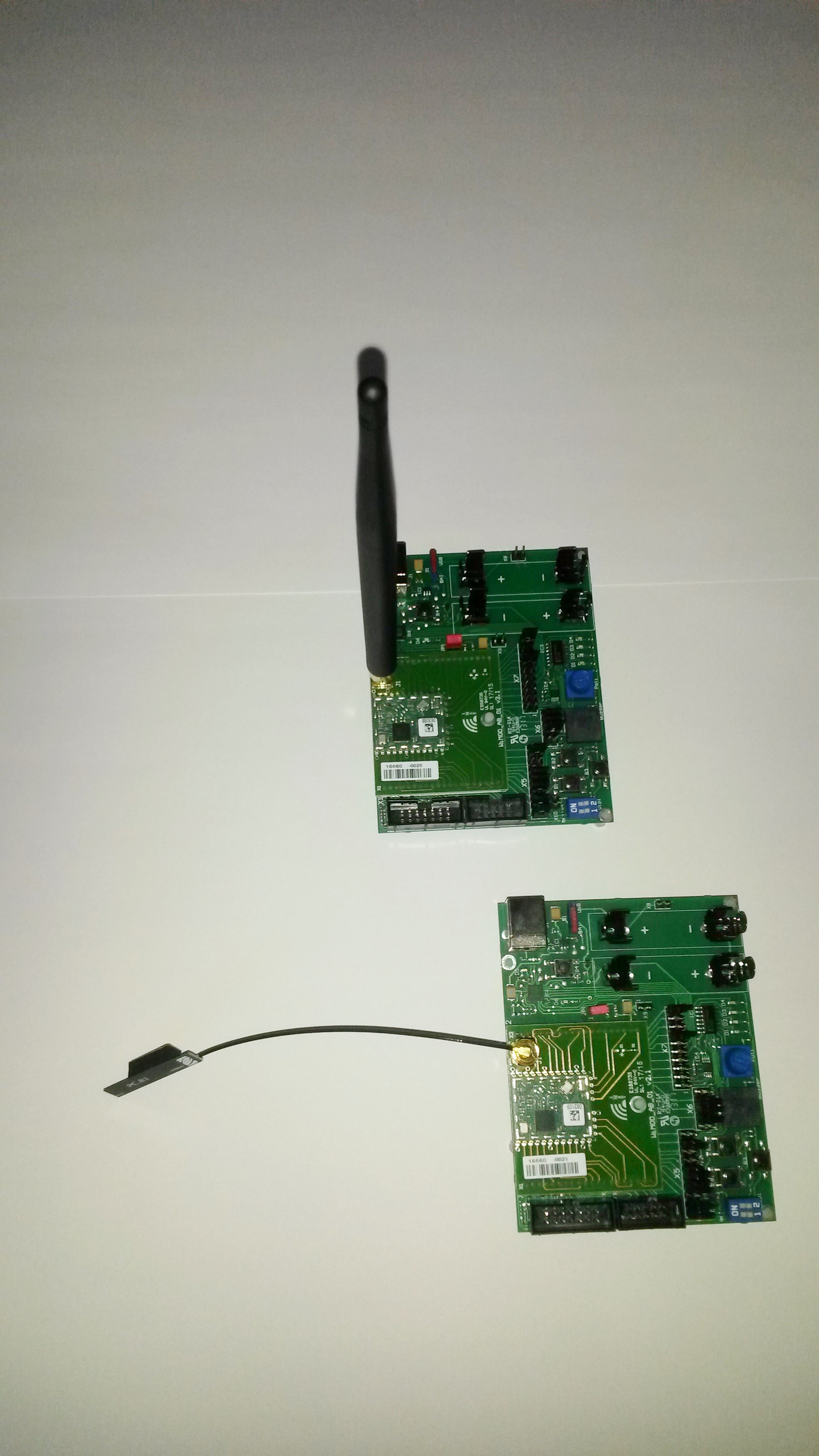
The picture shows 2x IMST iM880B modules on development boards. One has the IMST dipole antenna supplied with the module and the other has a Taoglas PC81.07.0100A.db PCB antenna.
The Taoglas antenna is what Texas Instruments describes as a “meandering monopole” antenna and is often called a PCB trace antenna. Per an earlier posting, PCB trace antennae are among the most “popular” for devices.
I was interested in the performance of the Taoglas antenna vs. a “standard” dipole. BIG ANTENNA vs. SMALL ANTENNA!
I used the IMST LoRa Radio Link Test system to run long (hundreds of packets) repeat tests outside in the open, away from any clutter, at 10m distance. TX power +17dBm.
Using the IMST dipole antennae at both ends I got very stable downlink/uplink RSSI of -53/-53 dBm and SNRs of 7/7 dB.
Using the IMST dipole antenna at one end and the Taoglas PCB antenna at the other end I got very stable downlink/uplink RSSI of -72/-73 dBm and SNRs of 8/7 dB.
So… about 20dB difference which really just confirms common sense. The PCB antenna works very well but will deliver a much shorter range. 20dB difference means that if the dipole will work over 10km then the PCB antenna will work over about 1km.
Interesting results.
The philosophy for using such antenna’s as the taoglass and other small dimension antenna’s is to be predictable. These types of antenna’s are not much influenced by objects in close proximity.
Standard antenna’s like a full dipole are less predictable when used near objects. Many objects like metallic or watery objects, including human bodies, will detune the antenna so that the gain and pattern vary widely, making the reach unpredictable.
In certain applications a shorter but predictable reach/distance is more desirable than a less predictable and varying reach/distance. So the small antenna can be a good choice for certain node’s. I think f.i. as a sensor in garbage cans.
So the designer/manufacturer makes a choice for a certain antenna.
People who own a gateway usually like to have a better range so they must use a full dipole or better type and place it (far) away from other objects, with line of sight in the preferred direction.
Antenna test planned
I will carry out an 868 Mhz small rubber antenna test soon, with models listed below.
No professional test, since i do not own proper measurement equipment. I will use 4 Heltec LoRa 32 boards running with same software to achieve comparable results.
Test setup:
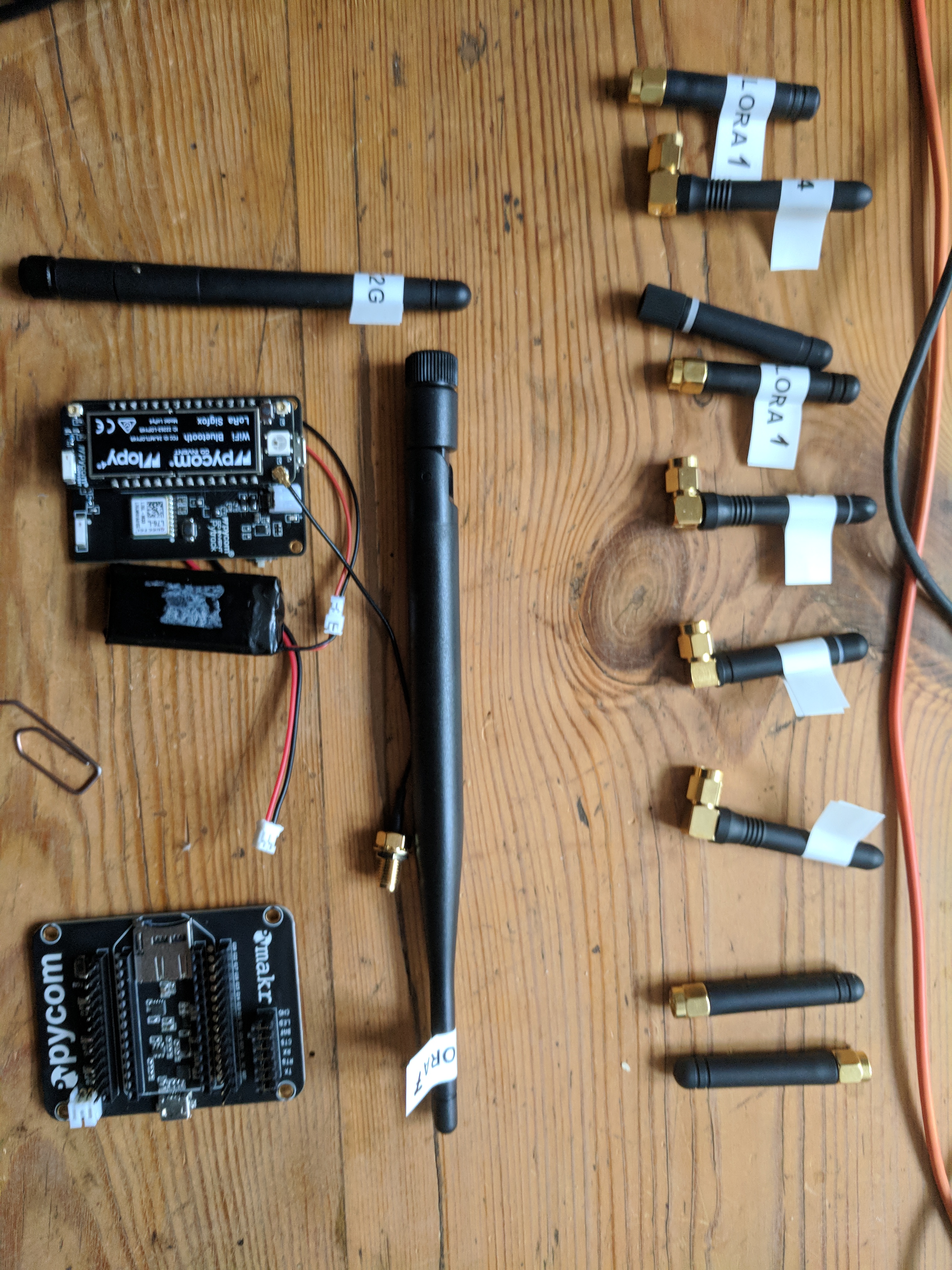
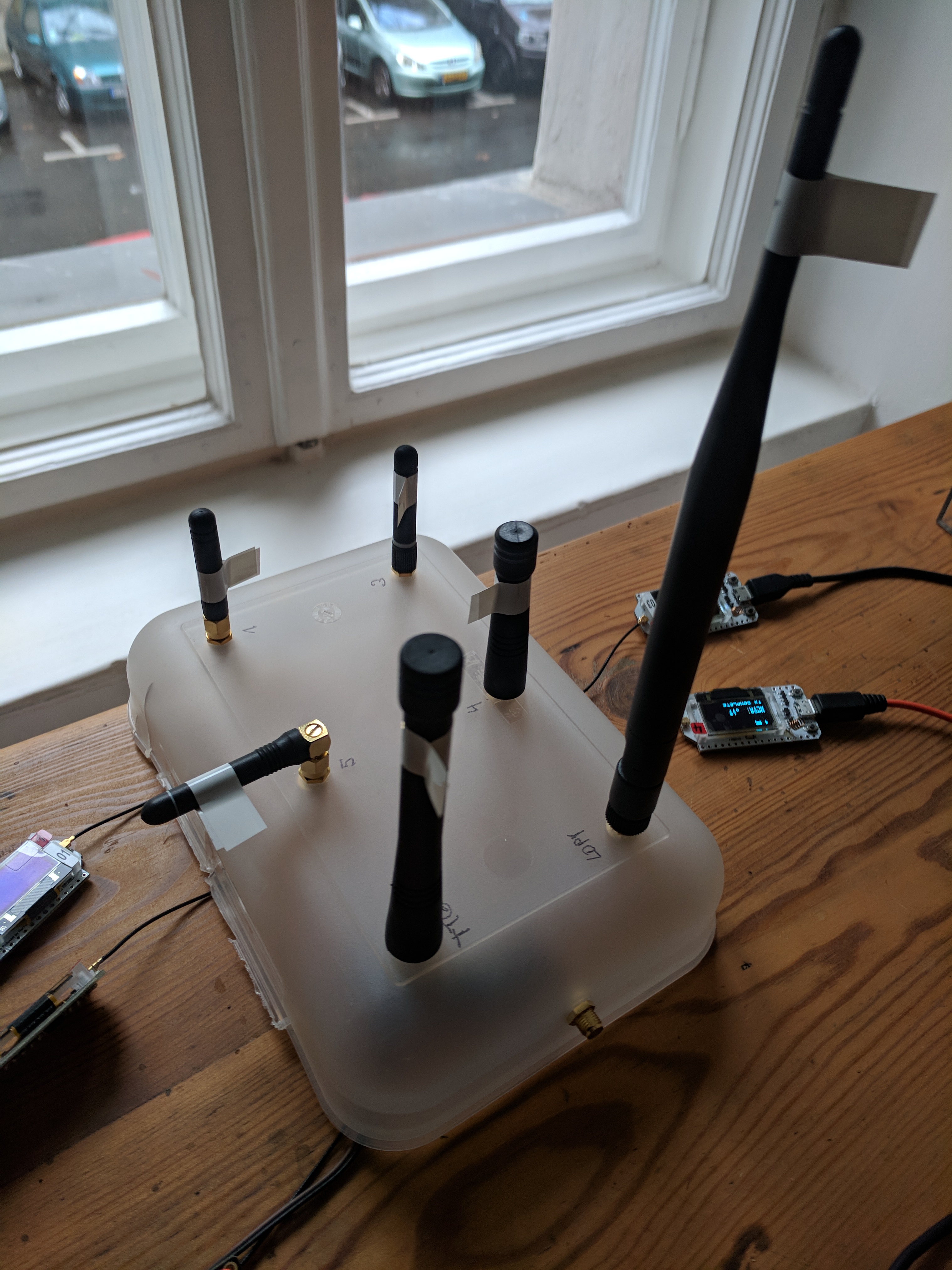
#1
Heltec Lora-32
#2
Linx Lambda/4
https://www.digikey.de/product-detail/de/linx-technologies-inc/ANT-868-CW-RCS-SMA/ANT-868-CW-RCS-SMA-ND/5592342
#3
Linx Lambda/4
https://www.digikey.de/product-detail/de/linx-technologies-inc/ANT-868-CW-RH-SMA/ANT-868-CW-RH-SMA-ND/1962848
#4
Taoglas TI.08.C.0112
https://www.digikey.de/product-detail/de/taoglas-limited/TI.08.C.0112/931-1067-ND/2332694
#5
Siretta Delta 5A Lambda/4
https://www.siretta.co.uk/download.php?id=636&cmd=view
https://www.digikey.de/product-detail/de/siretta-ltd/DELTA5A-X-SMAM-S-S-17/DELTA5A-X-SMAM-S-S-17-ND/609630
#6
Linx Lambda/4
https://www.digikey.de/product-detail/de/linx-technologies-inc/ANT-868-CW-RAH-SMA/ANT-868-CW-RAH-SMA-ND/5592341
#7
Pycom LoRa & Sigfox Antenna Lambda/2
#8
Linx Lambda/4
https://www.digikey.de/product-detail/de/linx-technologies-inc/ANT-868-CW-HD-SMA/ANT-868-CW-HD-SMA-ND/5592339
868MHz center-fed dipole whip antenna, adjustable, 19.5cm, SMA
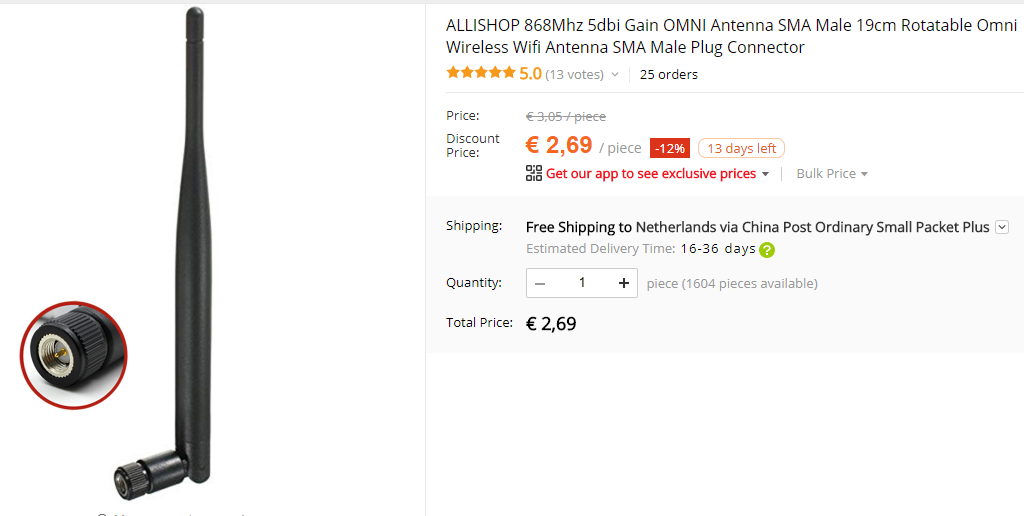
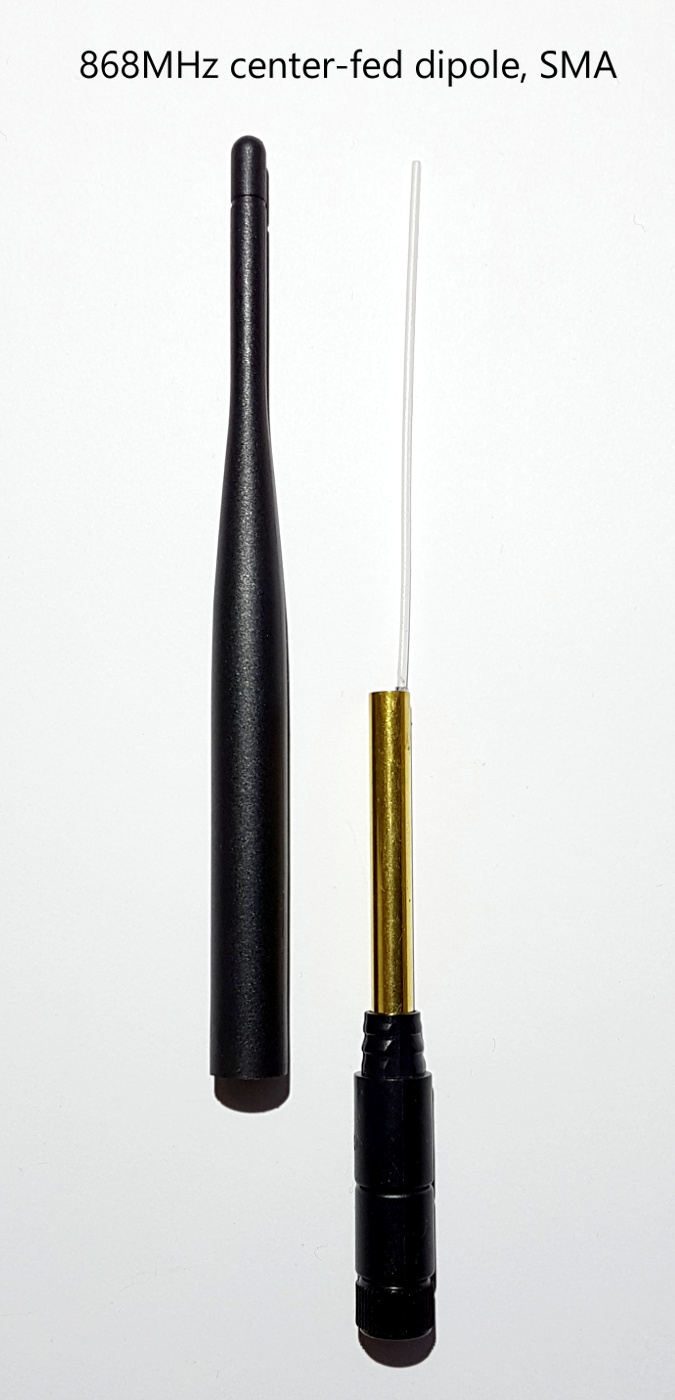
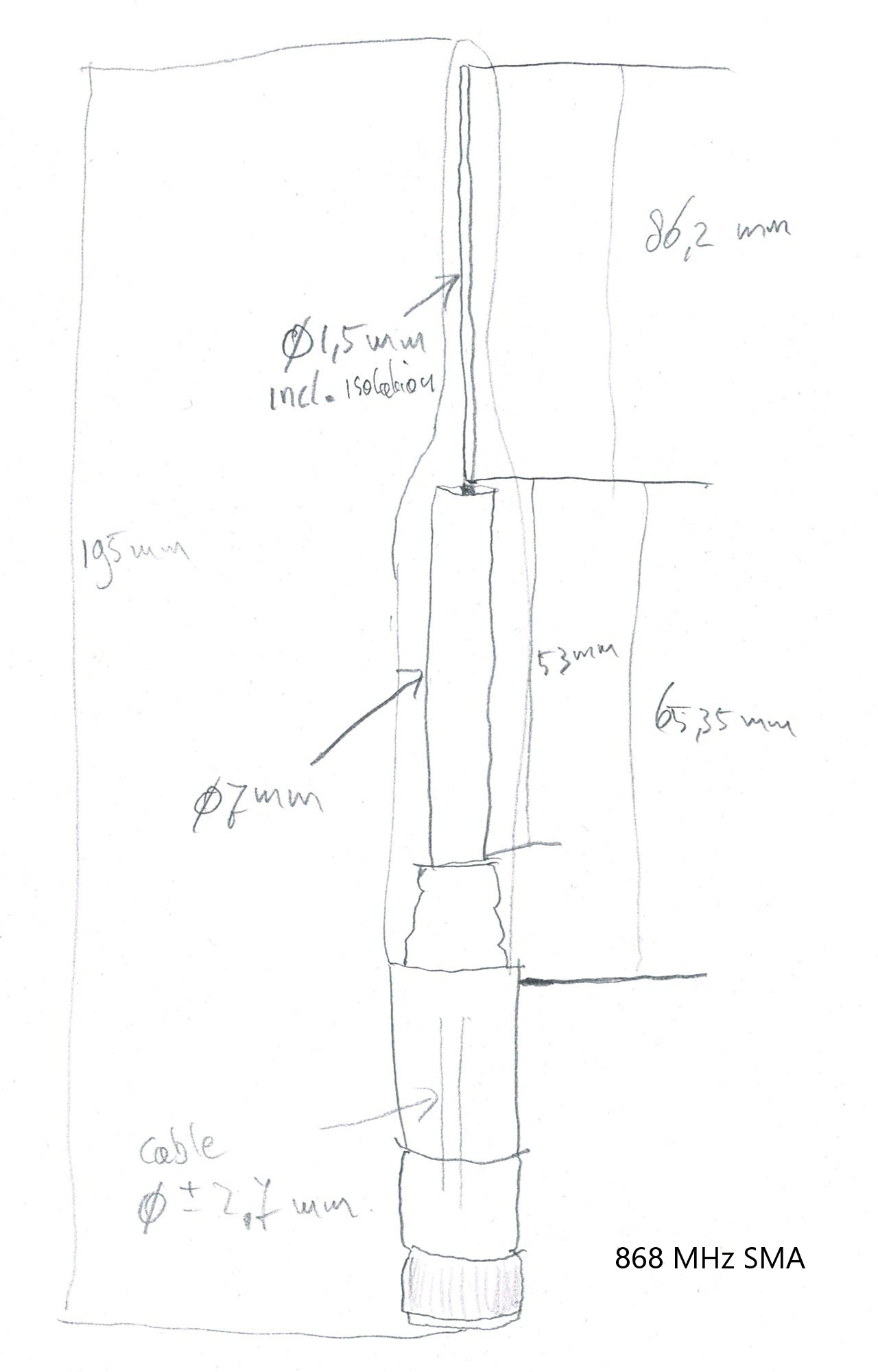
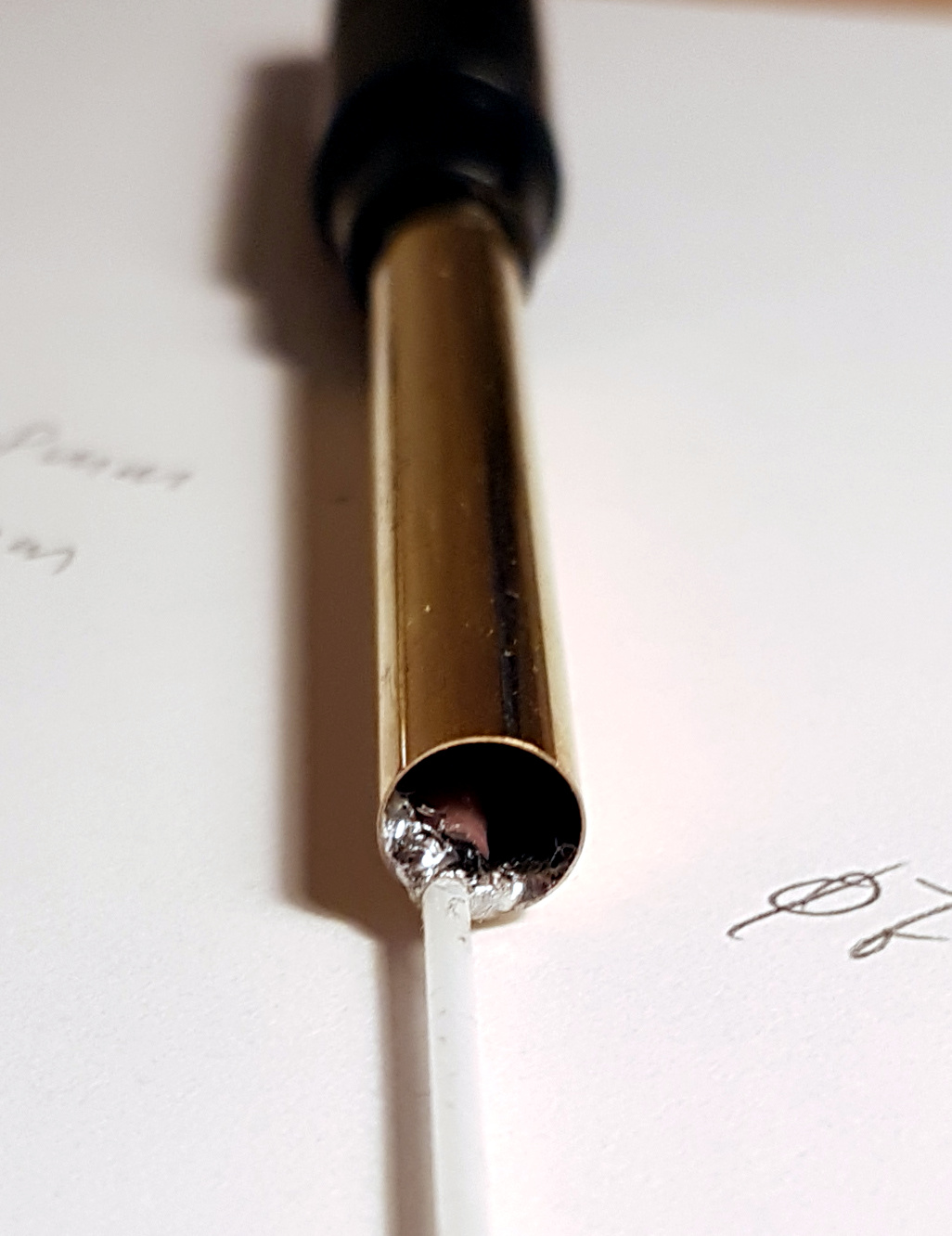
Helical monopole whip antenna, 5cm, SMA
Included with both TTGO LoRa32 V2 and with Heltec Wifi LoRa32 V2
The version from Heltec was 2mm shorter (either by design or accidental).
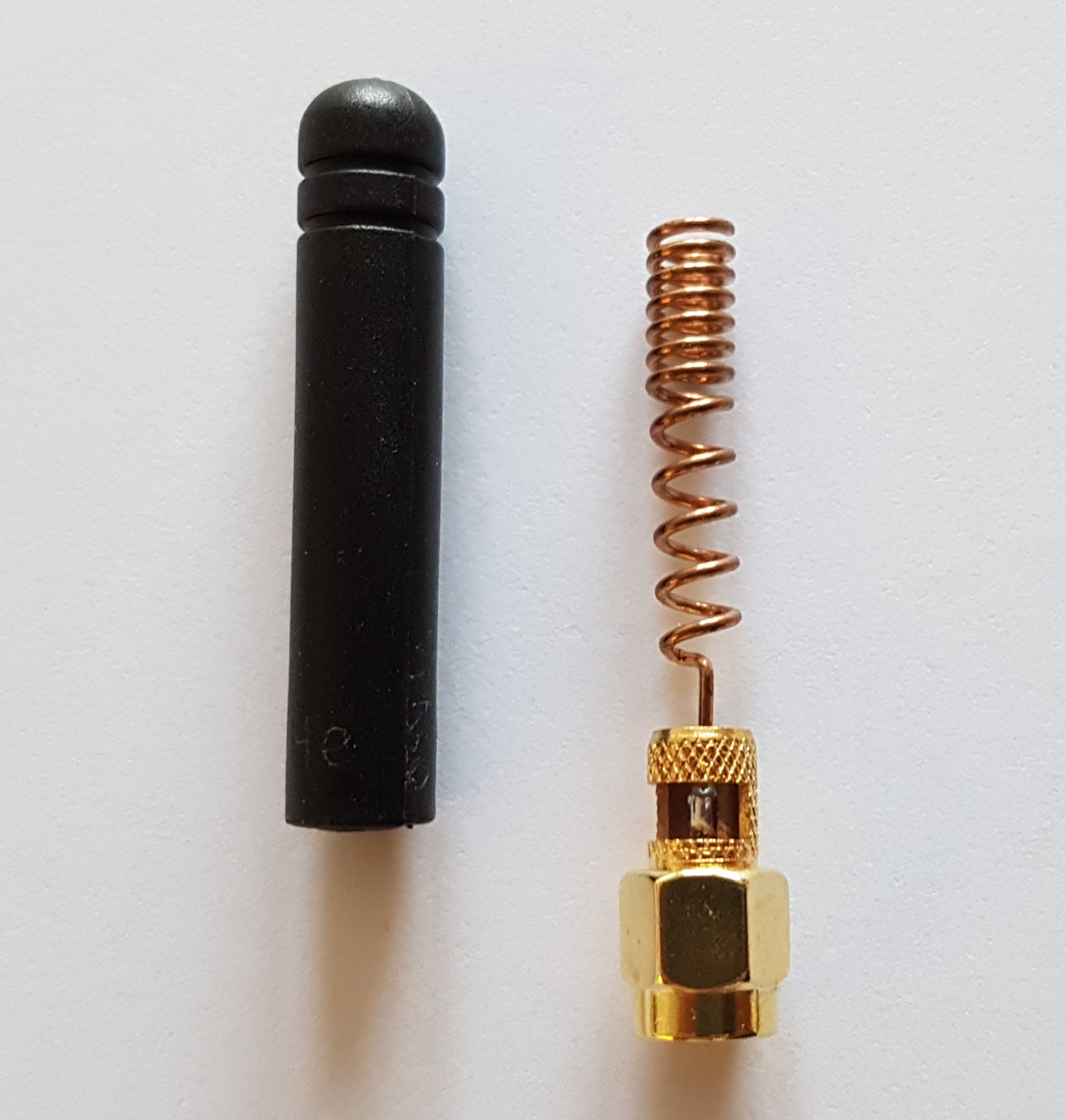
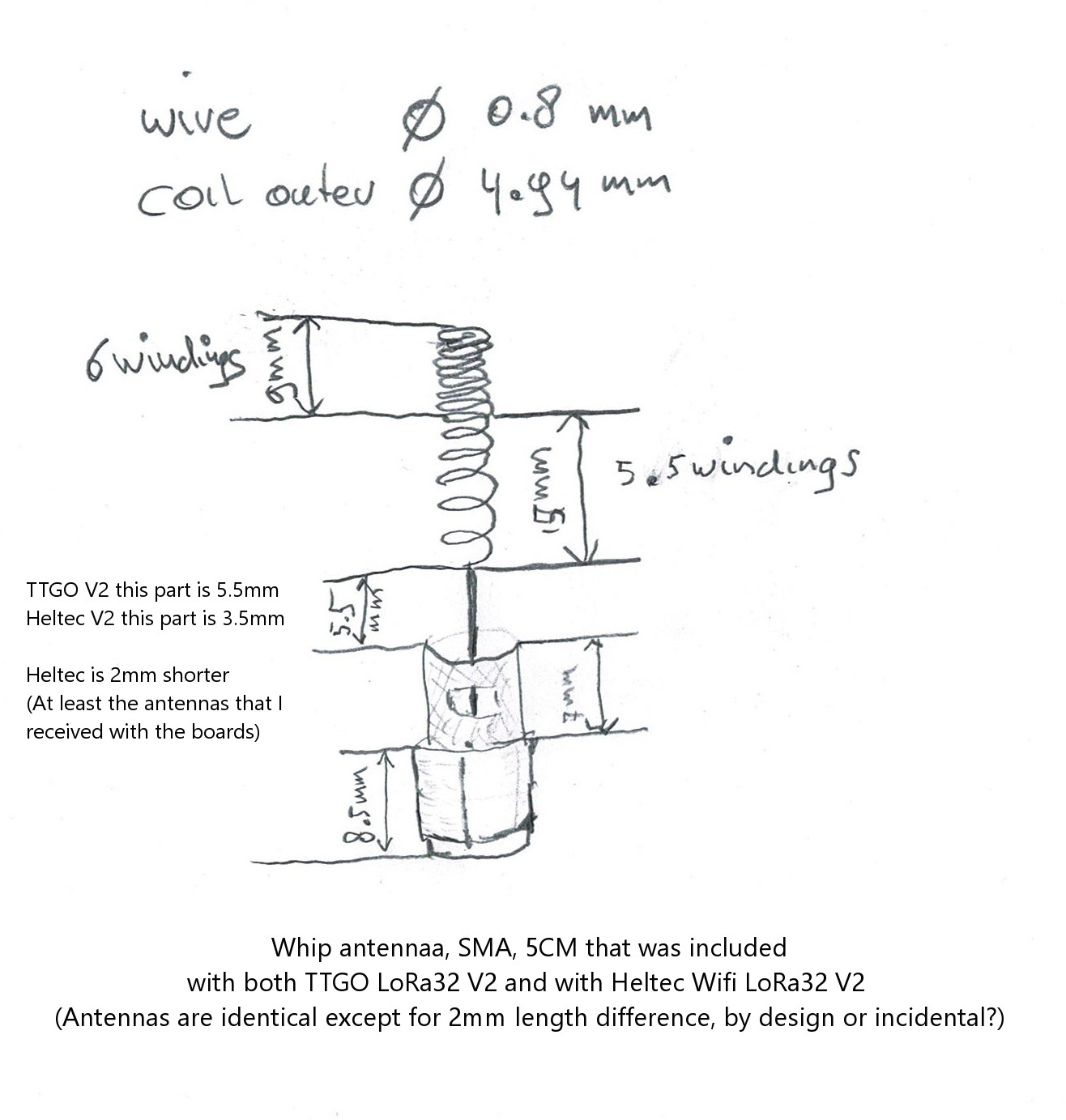
Just a note: for a proper comparison you will need to test all antennas in upright position.
Ik would be nice if we could have a visual overview with pictures, measures and specifications for antennas.
That way one could visually compare different antenna’s (because the specs e.g. frequency range most often is not written on them).
Of course, that’s why i have connectors at the side of the box, for the 90 degree antennas.
I missed the side one, had only noticed the horizontally mounted antenna on top. 
90 degree antennas will be mounted to side ports in next run. 
But first let’s finish the first run.
Still not finished while collecting more data, but it already looks like there will be an expected and an unexpected result.
Expected: LoPy with it’s long antenna (maybe dipole inside?) has far best results.
Unexpected: Near to LoPY comes Heltec with Linx Antenna #8 (reference see above).
Why unexpected? Because in data sheet this antenna is stated with low gain of -0,3dBi, while other antennas in the test are stated with higher gain values.
Thanks. There’s quite a lot involved with antennas.
The shortening factor is new to me. It explains why the tube from the above 868MHz 19,5cm dipole whip is shorter than 1/4 λ.
By the way: i discovered small mechanical differences with the antennas came with Heltec boards, see picture.
Maybe different production batches?
Or, maybe, 868 vs. 433 Mhz?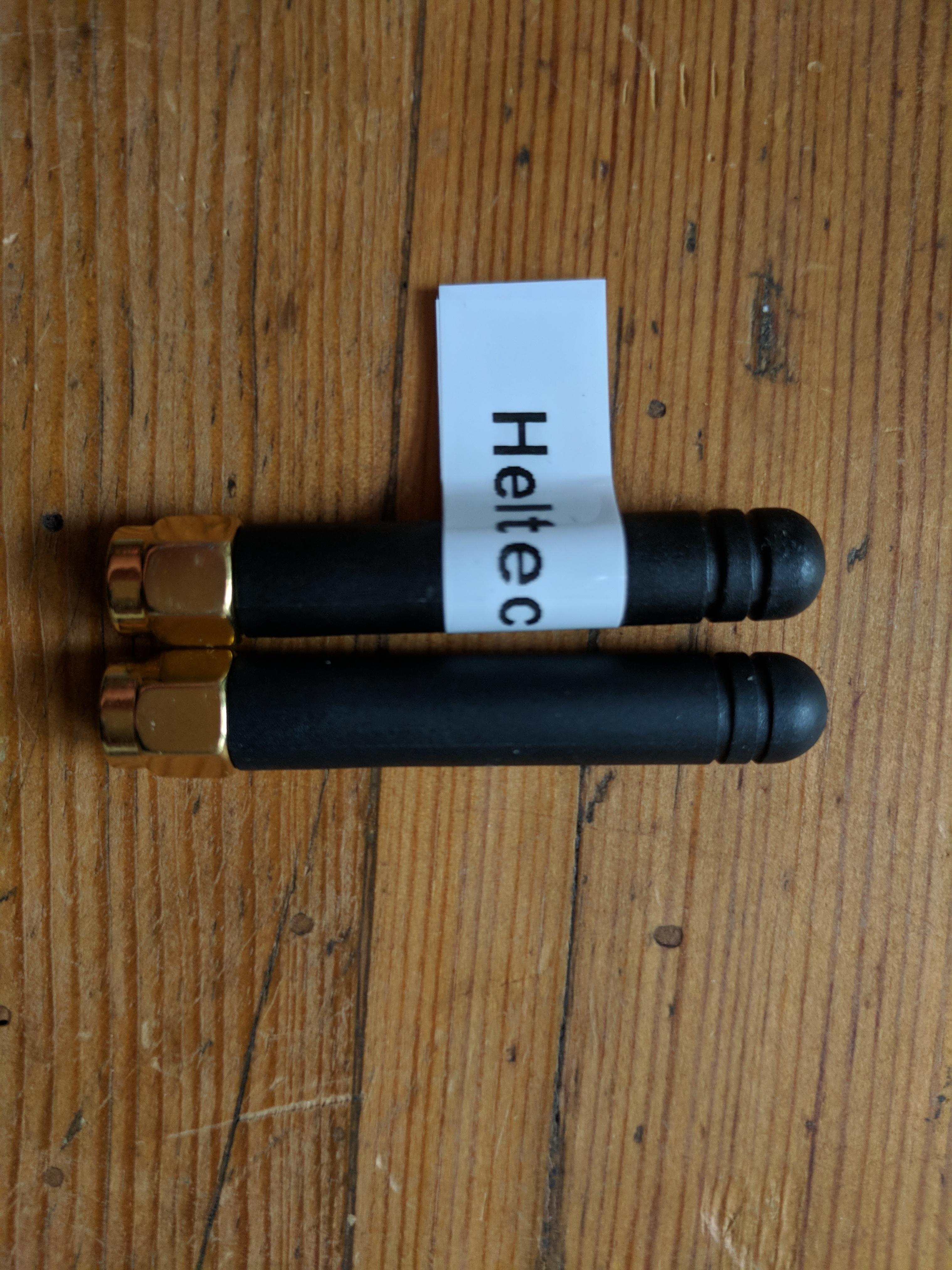
Do not trust what you see on the outside
Remove the caps to see what’s inside (you can slide them back on again). Minor differences on the outside can mean major differences on the inside (even if the outsides appear identical). The antenna size can be different but even the type of antenna can be completely different (I know because I have opened most of my antenna’s).
(To remove the cap: bend the plastic ‘up and down’ to the sides while pulling it off. Some caps come off very easily while others require more strength to remove).
Note: Removing the caps of the foldable antenna types will require more craftsmanship and subtle finicking (at least if you want to be able to put it back on) and will require more force.
Many of these ‘Chinese antenna’s’ may not be specifically for 868MHz at all, some are used for GSM 900/1800 MHz, and the antennas that are inside can be very different between one make and another.
I already planned to open (and, if necessary, break) them and will post pictures here, soon.
But will first test them in original condition.